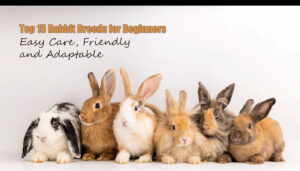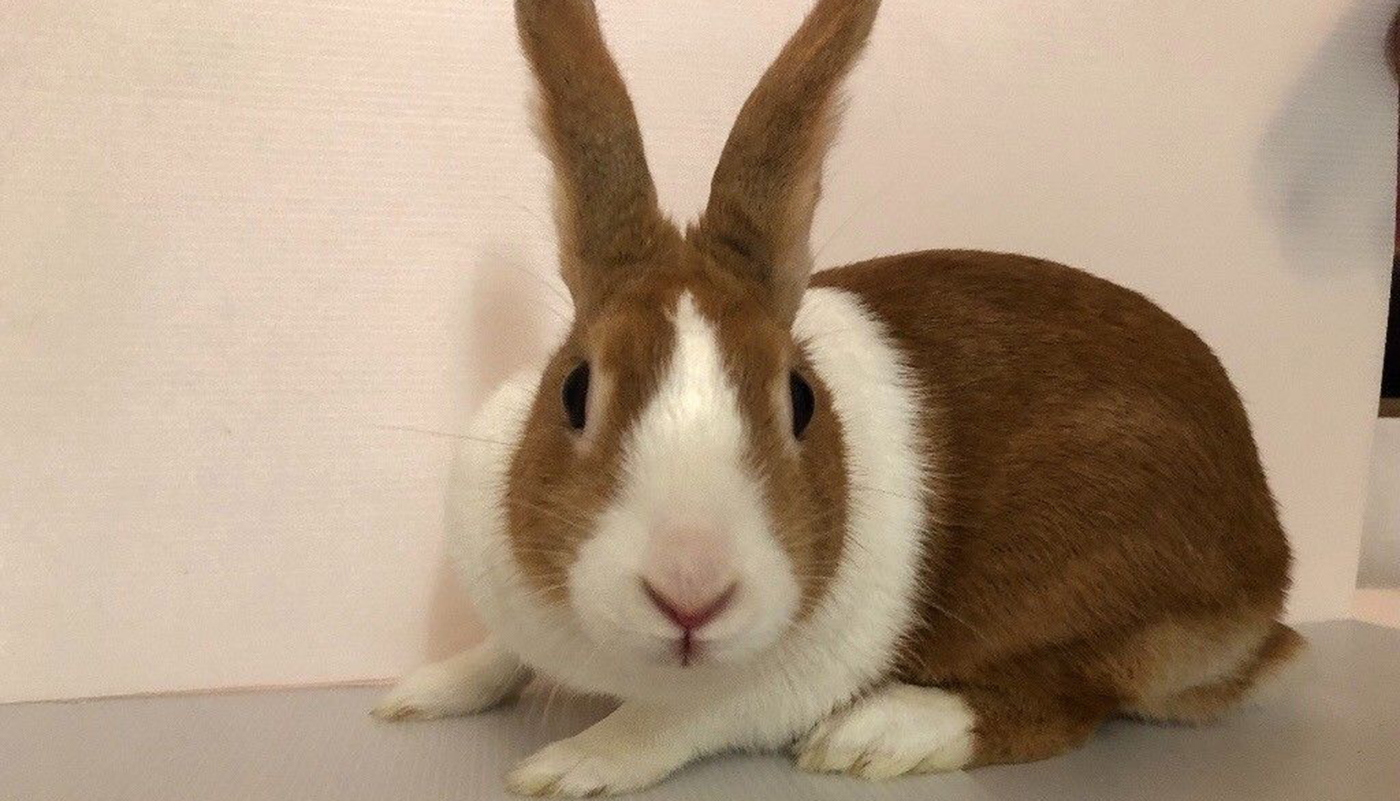
The Giant Angora rabbit has a coat of wool instead of fur. They are one of only four out of eleven Angora rabbits breeds to be recognized by the American Rabbit Breeders Association. It is also the largest of these Angora rabbit breeds. Their wool is ideal for most people who have allergies towards other wools such as sheep or goat’s wool. The other three Angora breeds recognized by the standard are the English, French and Satin Angoras. The Angora breeds not recognized by the American Rabbit Breeders Association are the German, Chinese, Finnish, Japanese, Korean, Russian, St. Lucian and Swiss Angoras.
BREED PROFILE OVERVIEW
|
|
|---|---|
| Breed Name: | Giant Angora |
| Other Names: | None |
| Country of Origin: | United States of America |
| Breed Purpose: | Fur, exhibition, and pets |
| Breed Size: | Giant |
| Breed Weight: |
Female/Doe: 12 lbs. Male/Buck: 12 lbs. |
| Breed Color(s): | Ruby-eyed White (REW) |
| Physical Appearance: |
The Giant Angora is the largest of the Angora rabbits recognized by the American Rabbit Breeders Association.
Their coat has three types of wool – a soft undercoat, awn fluff and awn hair. The awn type of wool is only present of the Giant Angora and the German Angora rabbit breeds. Their body type is a commercial body-type that is very large with a dense wool coat. That has a broad forehead which, like most of their face except for their muzzle is covered in wool as is the rest of their body. Their wool gives them a very poufy appearance like a soft pin- cushion. Their faces are very similar to all other Angoras with long ears that have a slight downward fold at the tips. |
| Temperament: | Sweet, docile and gentle |
BREED CHARACTERISTICS
- They have a decent sized litter of around 2 to 12 and the females make very good mothers. Most rabbits have good maternal instincts and some breeds can be a bit testy and protective when they have young. They can also be uncharacteristically moody during mating season.
- Their young open their eyes around 7 to 14 days with an average of 10 days after birth. When their eyes have opened, they can start to be introduced to food such as alfa pellets and water.
- Even when the young start to eat it does not mean they are quite ready to be weaned from their mothers. The mothers will know when it is time to wean her young. It is important for the baby rabbit’s health, growth, immune system and development of a proper digestive system that they do not be removed from their mother for at least 8 weeks. They usually require her milk for a minimum of 8 weeks after birth.
- Their average lifespan is 7 to 12 years although there have been some breeds that have lived a little over 12 years with the proper care.
| Good Pets? | They make very good pets for those who are willing to groom their fur. They are not recommended for novice owner/breeders or families with young children. They are more popular with Angora rabbit fanciers, breeders, and exhibitioners. |
| Child Friendly? | Children should be supervised around animals and properly taught how to look after them and handle them. Rabbits can bite and scratch |
| Ideal Climate: | All climates – rabbits should never be left outside without proper shelter and housing that must be raised off the ground and predator safe. |
| Conservation Status: | Not Listed by the *ALC Status/Rarity: They are not listed by the American Livestock Conservancy |
| Recognized by the ARBA? | Yes, the Ruby-eyed White variety was recognized by the Association in 1988. There is a black variety currently in development but not recognized. |
| Rabbit Associations/Clubs: | National Angora Rabbit Breeders Club |
| Where to buy them? | Please refer to the National Angora Rabbit Breeders Club for more information on registered breeders of the English Angora Rabbit Breed. The USA Rabbit Breeders Directory is a useful resource to find breeders, clubs, and information about the breed. |
| Note: *ALC stands for American Livestock Conservancy | |
GENERAL INFORMATION
The Giant Angora rabbit needs to be groomed at least twice a day.
It has very dense fur. If their wool is a bit cottony it takes a lot of grooming and they are not recommended for first-time rabbit owners/breeders or young children.
They are prone to wool mites if they are not checked regularly and treated for the prevention of these.
They can also be prone to a disease called wool block. Due to the length of their hair, they are more prone to it than other rabbit breeds with shorter coats. Most rabbits ingest some of their hair through their life when they groom themselves. Angora rabbits are more susceptible to it because of the length of their hair and the amount they ingest. Their system is not able to digest or pass the foreign matter from their system.
It is essential to pluck or clip their wool every 90 to 120 days to try and avoid the risk of the rabbit coming down with wool block.
Rabbits can be quite lively and energetic and need quite a bit of exercise and stimulation. It is a good idea to have a nice safe and secure run for them to play in and stretch their legs.
Toys, tubes and various obstacle courses for them is a good way to help them expend some of their energy and they are really fun to watch at play.
They are also sociable animals that do like to have a friend or two to play with.
Regular health and critter check once a week or every second week should become a habit. This will help to keep your rabbit(s) in excellent condition and health. Grooming does not require a lot if their coats are low maintenance. But it is a good idea to give them a nice gentle brushing to help remove any excess hairs regardless of the length of their coats.
It is also a good idea to check on the state of their teeth to ensure that they are not too long and causing the rabbit any discomfort.
Rabbits teeth never stop growing and getting fresh hay on a regular basis helps to control the growth of their teeth.
Rabbits need a good diet of quality pellets that are filled with their daily nutritional requirements. They do love dandelions, cabbage and various fruits as a nice tasty treat.
Rabbits that have quite a short coat are not really at risk for most of the digestive problems long fur seem to cause rabbits. They can still get other ailments such as flystrike, ear mites or overgrown teeth. These can all be controlled/maintained or avoided altogether with the proper health and grooming care of the rabbit(s).
If you have two rabbits and do not want to breed them it is possible to spay female rabbits and neuter male rabbits.
The females can be spayed as young as four months old, but vets prefer to wait until they are at least six months old before doing so.
The young males can be neutered as young as found months old.
Rabbits, just like any other pet, should be dewormed on a regular basis. Check with your local vet for proper guidance on the administering of worm medication to your animals.
HISTORY
The Angora rabbit breed is one of the oldest types of domesticated rabbit breeds. They are thought to have originated in Ankara.
They have long since been bred for their beautiful coats that is wool instead of fur and known as the prized Angora wool. Angora wool is gathered by either plucking, shearing or combing of the wool from the rabbit. Their wool is prized as it tends not to possess the same allergic qualities as other animals such as sheep and goat wool can.
Rabbits that were heavily furred have been known since King Henry VIII reign which is from 1509 to 1547. The first furred rabbits were brought to France in 1723 becoming one of the most popular breeds in France, especially as pets to the French royals in the mid-18th century.
The breed became popular across many continents in Europe by the end of the 18th century including that England.
Angora rabbits were first imported to America in the 20th century.
As the German breed is not allowed as a registered ARBA show breed a Massachusetts breeder set about to create a Giant Angora breed similar to that of the German Angora breed. She used German Angoras, Flemish Giants and French Lops in the creation of the Giant Angora Breed. The breed was developed by Louise Walsh of Taunton Massachusetts in the United States of America.
Video
USEFUL LINKS
- American Rabbit Breeders Association
- Fur Commission USA
- North American Meat Institute
- American Livestock Conservancy
- Animal Shelter (ASPCA)
- American Veterinary Medical Association
- American Animal Welfare Society
- American Animal Control
- American Society of Animal Science
- United States Department of Agriculture
- United States Department of Agriculture – Rabbit Meat
 Discover the Charm of Angora Fox Rabbit: Origins, Appearance, and Care Tips
Discover the Charm of Angora Fox Rabbit: Origins, Appearance, and Care Tips 10 Best Meat Rabbit Breeds
10 Best Meat Rabbit Breeds American Fuzzy Lop Rabbit – Everything You Need to Know
American Fuzzy Lop Rabbit – Everything You Need to Know American Havana Hybrid Rabbit: A Perfect Blend of American and Havana Breed
American Havana Hybrid Rabbit: A Perfect Blend of American and Havana Breed Netherland Dwarf Rabbit – Everything You Need to Know
Netherland Dwarf Rabbit – Everything You Need to Know English Lop Rabbit – Everything You Need to Know
English Lop Rabbit – Everything You Need to Know Top 15 Rabbit Breeds for Beginners: Easy Care, Friendly, and Adaptable
Top 15 Rabbit Breeds for Beginners: Easy Care, Friendly, and Adaptable Crème D’Argent Rabbit – Everything You Need to Know
Crème D’Argent Rabbit – Everything You Need to Know Beveren Rabbit – Everything You Need to Know
Beveren Rabbit – Everything You Need to Know Dutch Rabbit – Everything You Need to Know
Dutch Rabbit – Everything You Need to Know Silver Marten Rabbit – Everything You Need to Know
Silver Marten Rabbit – Everything You Need to Know English Spot Rabbit – Everything You Need to Know
English Spot Rabbit – Everything You Need to Know